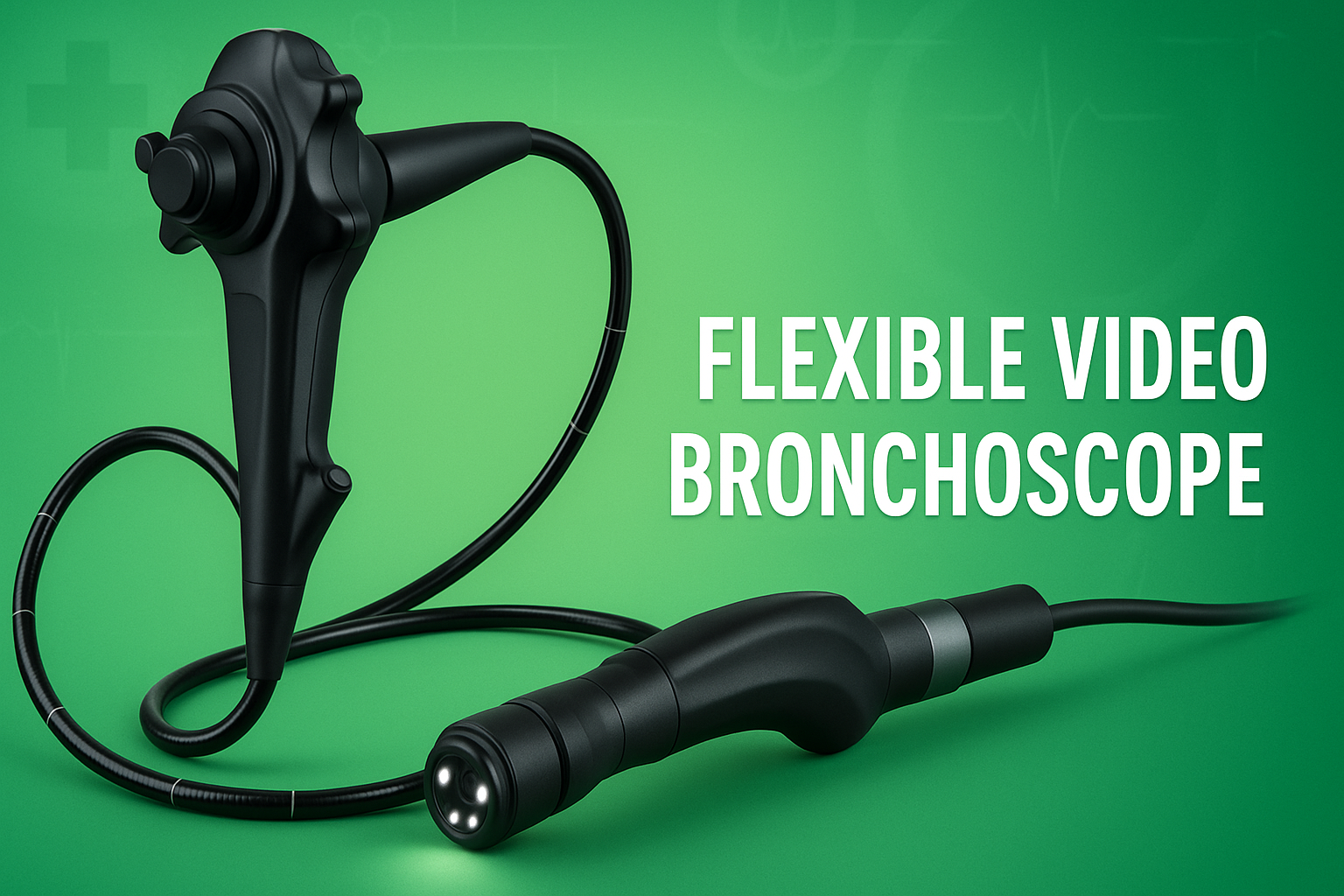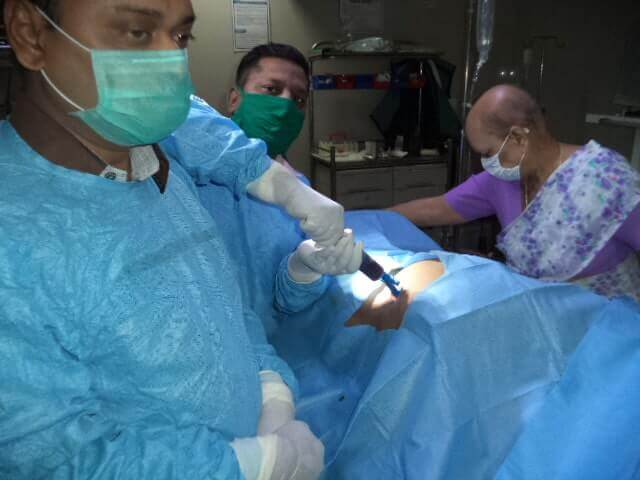Why the Flexible Video Bronchoscope Is a Game-Changer in Airway Visualization
Airway visualization has long been a cornerstone of respiratory medicine, guiding clinicians through complex diagnostic and therapeutic procedures. Among the innovations transforming this field, the Flexible Video Bronchoscope stands out for its remarkable ability to provide clear, real-time images of the bronchial tree. The introduction of the Flexible Video Bronchoscope has redefined how pulmonologists, anesthesiologists, and critical care specialists approach airway management. In this article, we will explore why the Flexible Video Bronchoscope is a game-changer in airway visualization, delving into its history, key features, clinical impact, patient safety considerations, integration into medical practice, and future prospects.
The Evolution of Bronchoscopy: From Rigid to Flexible Video
Bronchoscopy began with rigid instruments allowing only straight-line views of the trachea and main bronchi. While useful, these rigid devices limited access to deeper airways. The advent of flexible fiberoptic bronchoscopes marked the first leap forward, offering improved maneuverability. Yet, early fiberoptic systems suffered from suboptimal image quality and fragility.
The Flexible Video Bronchoscope represents the next evolution. By integrating miniature high-resolution cameras at the tip of the scope, modern Flexible Video Bronchoscopes deliver vibrant, detailed visuals. These scopes use advanced sensors, high-intensity LED illumination, and digital signal processing to produce images that were once unimaginable. This technological leap has broadened the scope of bronchoscopic procedures, from routine diagnostic biopsies to intricate therapeutic interventions.
Key Features of the Flexible Video Bronchoscope
1. High-Definition Imaging
One of the most compelling advantages of the Flexible Video Bronchoscope is its high-definition imaging capability. Conventional fiberoptic scopes rely on bundles of optical fibers, which can degrade over time, causing flicker and reduced clarity. In contrast, a Flexible Video Bronchoscope employs a tiny digital camera, capturing crisp images that enhance visualization of subtle mucosal changes, vascular patterns, and lesions.
2. Enhanced Maneuverability
Despite its sophisticated optics, the Flexible Video Bronchoscope maintains remarkable flexibility and maneuverability. Its steerable distal tip allows a full range of motion—up, down, left, and right—facilitating access to peripheral bronchi and segmental airways. This agility is critical when navigating tortuous anatomy or targeting small nodules for biopsy.
3. Integrated Suction and Instrument Channels
Most Flexible Video Bronchoscopes incorporate working channels for suction and instrument passage. Clinicians can aspirate secretions, deliver topical medications, or pass biopsy forceps and cryoprobes without exchanging tools. This integration streamlines procedures, reduces patient discomfort, and shortens procedure time.
4. Ergonomic Design
User comfort and control are pivotal, especially during lengthy interventions. Modern Flexible Video Bronchoscopes feature lightweight materials, ergonomic handles, and intuitive control wheels. These design improvements minimize operator fatigue and enhance procedural precision, contributing to consistently high-quality outcomes.
Clinical Impact and Improved Diagnostics
Superior Detection of Early Lesions
Early detection of airway pathology significantly influences patient prognosis. The Flexible Video Bronchoscope excels at identifying minute mucosal irregularities and early neoplastic changes, thanks to its high-resolution video output. Studies have shown that video bronchoscopes detect premalignant lesions and carcinoma in situ more effectively than older fiberoptic models, enabling earlier intervention and improved survival rates.
Advanced Sampling Techniques
Accurate tissue diagnosis often hinges on precise sampling. The enhanced visualization provided by the Flexible Video Bronchoscope guides biopsy tools directly to suspicious areas, increasing diagnostic yield. Techniques such as endobronchial ultrasound (EBUS) can be seamlessly integrated, combining real-time ultrasound imaging with the Flexible Video Bronchoscope’s optics for lymph node staging in lung cancer.
Therapeutic Bronchoscopy
Beyond diagnostics, the Flexible Video Bronchoscope facilitates a range of therapeutic interventions. From stent placement and tumor debulking to bronchial thermoplasty for severe asthma, video-guided procedures benefit from the improved visualization offered by these scopes. Clinicians can monitor tissue response in real time, adjusting techniques on the fly to maximize efficacy and safety.
Patient Safety and Comfort
Reduced Procedure Time
By consolidating imaging, suction, and instrumentation into a single Flexible Video Bronchoscope, procedural efficiency improves. Shorter procedure times mean less sedation, reduced risk of hypoxia, and lower overall complication rates. Patients experience fewer episodes of desaturation and require less analgesia, translating to quicker recovery.
Minimized Trauma
The flexible, atraumatic tip of the Flexible Video Bronchoscope navigates delicate airways gently. This reduces mucosal abrasion, bleeding, and the incidence of post-procedural coughing or sore throat. When combined with advanced sedation protocols, patients tolerate bronchoscopic procedures more comfortably.
Infection Control
Modern Flexible Video Bronchoscopes are designed for rigorous reprocessing and sterilization. Removable distal caps, smooth surfaces, and durable materials facilitate thorough cleaning and high-level disinfection. This reduces the risk of scope-associated infections—a crucial consideration in immunocompromised or critically ill patients.
Training and Integration into Medical Practice
Simulation-Based Education
Proficiency with the Flexible Video Bronchoscope demands specific skills. Simulation-based training has emerged as a cornerstone of bronchoscopic education. High-fidelity simulators replicate airway anatomy and procedural scenarios, allowing trainees to practice navigation, sampling, and therapeutic techniques in a risk-free environment. Mastery on simulators translates to safer, more effective patient care.
Interdisciplinary Collaboration
The versatility of the Flexible Video Bronchoscope fosters collaboration across specialties. Pulmonologists, thoracic surgeons, anesthesiologists, and intensivists share insights and techniques, expanding the scope of bronchoscopic interventions. Joint airway management teams leverage the Flexible Video Bronchoscope for difficult intubations, percutaneous tracheostomies, and complex airway stenting.
Protocol Development
Healthcare institutions are developing standardized bronchoscopic protocols to optimize the use of the Flexible Video Bronchoscope. These guidelines address patient selection, sedation regimens, airway sampling workflows, and emergency management procedures. Standardization ensures consistent quality, enhances patient safety, and supports clinical research initiatives.
Future Directions and Innovations
Miniaturization and Robotics
Ongoing advances aim to further miniaturize the Flexible Video Bronchoscope, enhancing access to the distal bronchioles. Prototype ultra-thin video bronchoscopes promise to reach airways previously inaccessible, opening new frontiers in pulmonary diagnostics. Robotics-assisted bronchoscopic platforms are also under investigation, offering tremor-free navigation and autonomous targeting capabilities.
Integration with AI and Digital Analytics
Artificial intelligence (AI) is poised to revolutionize bronchoscopic interpretation. By analyzing video data from the Flexible Video Bronchoscope, AI algorithms can detect subtle abnormalities, quantify lesion size, and guide biopsy planning. Early studies suggest that AI-assisted bronchoscopic analysis may enhance diagnostic accuracy and streamline reporting.
Telebronchoscopy
The digital nature of the Flexible Video Bronchoscope facilitates remote consultation and telemedicine applications. High-definition bronchoscopic video streams can be transmitted securely to expert centers for real-time guidance during complex procedures. Telebronchoscopy holds promise for expanding specialized care to underserved regions and improving global health equity.
Conclusion
The Flexible Video Bronchoscope has emerged as a game-changer in airway visualization, combining high-definition imaging, superior maneuverability, and integrated instrumentation into a single versatile device. Its impact on diagnostic accuracy, therapeutic interventions, patient safety, and clinician training is profound. As technology continues to evolve—through miniaturization, AI integration, and telemedicine—the Flexible Video Bronchoscope will remain at the forefront of respiratory care. By embracing these innovations, healthcare providers can deliver more precise, efficient, and patient-centered bronchoscopic services, ultimately improving outcomes for individuals with airway disease.







